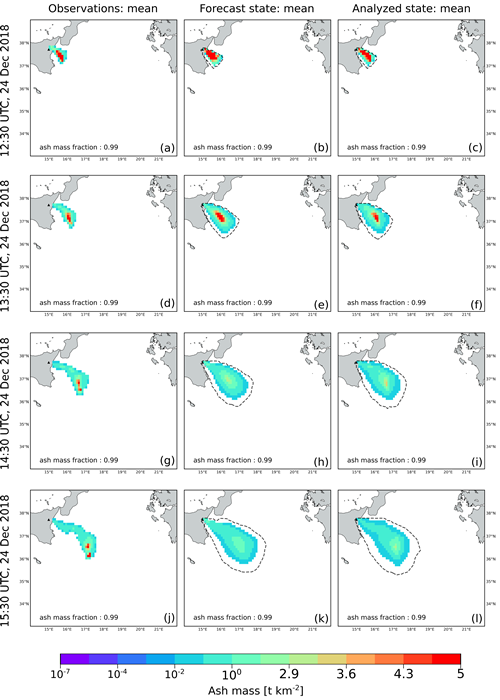Ensemble-Based Data Assimilation of Volcanic Ash Clouds from Satellite Observations: Application to the 24 December 2018 Mt. Etna Explosive Eruption

Pardini F, S. Corradini, A. Costa, Tomaso Esposti Ongaro, L. Merucci, A. Neri, D. Stelitano and Mattia de’ Michieli Vitturi (2020).
Atmosphere, 11/4, 359; https://doi.org/10.3390/atmos11040359.
Abstract
Accurate tracking and forecasting of ash dispersal in the atmosphere and quantification of its uncertainty are of fundamental importance for volcanic risk mitigation. Numerical models and satellite sensors offer two complementary ways to monitor ash clouds in real time, but limits and uncertainties affect both techniques. Numerical forecasts of volcanic clouds can be improved by assimilating satellite observations of atmospheric ash mass load. In this paper, we present a data assimilation procedure aimed at improving the monitoring and forecasting of volcanic ash clouds produced by explosive eruptions. In particular, we applied the Local Ensemble Transform Kalman Filter (LETKF) to the results of the Volcanic Ash Transport and Dispersion model HYSPLIT. To properly simulate the release and atmospheric transport of volcanic ash particles, HYSPLIT has been initialized with the results of the eruptive column model PLUME-MoM. The assimilation procedure has been tested against SEVIRI measurements of the volcanic cloud produced during the explosive eruption occurred at Mt. Etna on 24 December 2018. The results show how the assimilation procedure significantly improves the representation of the current ash dispersal and its forecast. In addition, the numerical tests show that the use of the sequential Ensemble Kalman Filter does not require a precise initialization of the numerical model, being able to improve the forecasts as the assimilation cycles are performed.


Devi effettuare l'accesso per postare un commento.